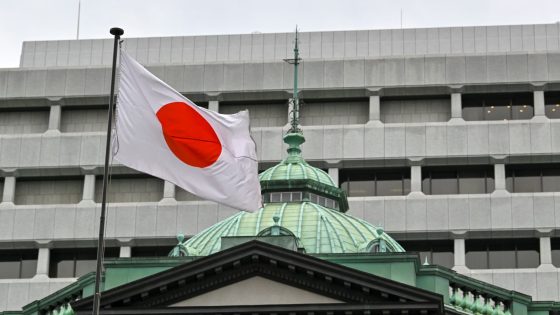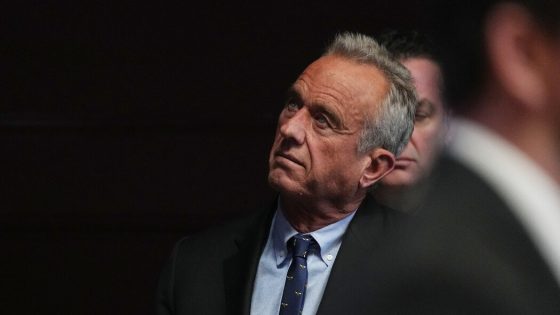The Japanese flag flutters over the Bank of Japan (BoJ) head office building (bottom) in Tokyo on April 27, 2022.
Kazuhiro Nogi | Afp | Getty Images
The Bank of Japan kept its benchmark interest rate steady at around 0.25% â the highest rate since 2008 â at the conclusion of a two-day meeting Friday.Â
While the decision is in line with the Reuters poll estimates, economists largely see another rate hike by end of the year.
The decision came as the BOJ treads cautiously with the task of normalizing monetary policy after a long-held ultra-easy approach, and doing so without prompting a shock to its economy.
Yields on the 10-year Japanese government bond were down 0.4 basis points while the yen was nearly flat at 142.52 against the dollar. The Nikkei 225, which was up 2%, maintained the same level after the decision.
BOJ Governor Kazuo Ueda said last month that the central bank would continue to raise interest rates if the economy and inflation stayed in line with the central bank’s projection.Â
The tightening stance has set the BOJ apart as an outlier at a time when most of the global central banks are shifting toward easing policy. On Thursday, The U.S. Federal Reserve cut interest rates by 50 basis points to a range of 4.75% to 5.0%.Â
The BOJ had long maintained interest rates near or below zero, as it sought to spur inflation and boost economic growth with massive monetary stimulus.
It dropped the negative interest rates in March and raised the key rates to 0.25% in July, as it views the economy was on track to achieving the 2% inflation target.
Japan’s core consumer prices index climbed 2.8% year on year, in line with Reuters estimates, versus a 2.7% rise in the previous month. Excluding fresh food and energy costs, the inflation rose 2.0%, versus 1.9% in the previous month.
This was the fourth straight rise in inflation, and provides the BOJ room to continue monetary tightening.
Japan revised down its second-quarter GDP growth to an annualized 2.9% from the previous quarter, a softer economic recovery than the government’s initial estimate and missed the 3.2% growth forecast in a Reuters poll.Â
The decision also came one week ahead of the Liberal Democratic Party’s leadership election on Sep. 27, where the winner is expected to be the new prime minister from early October.Â
Source Agencies




